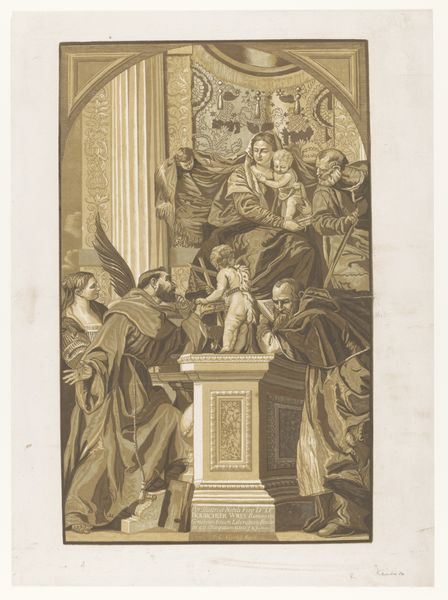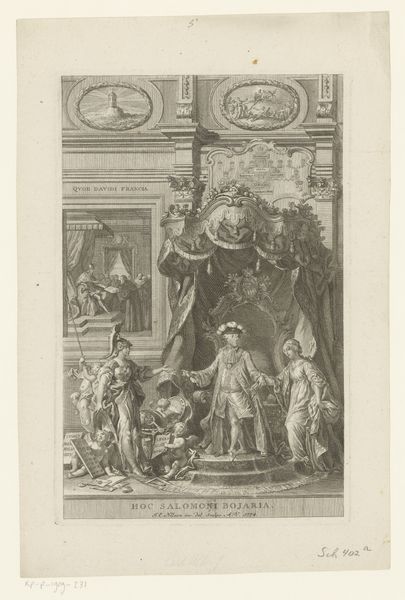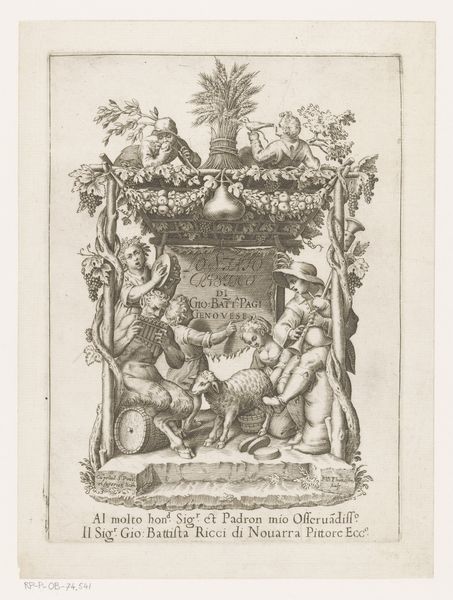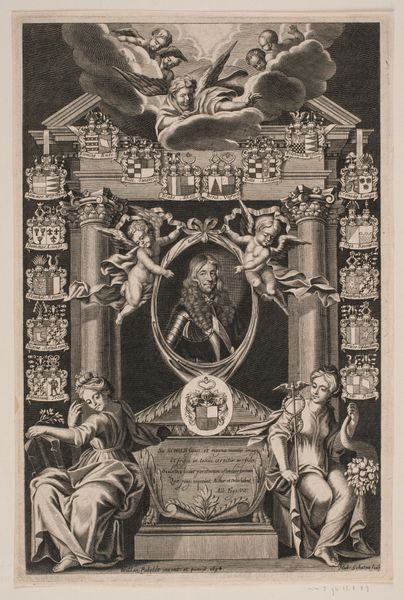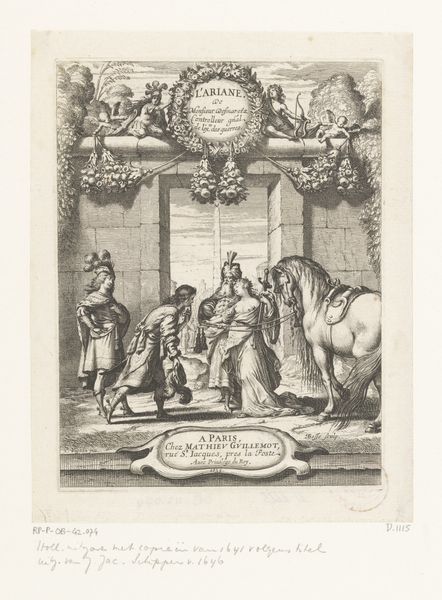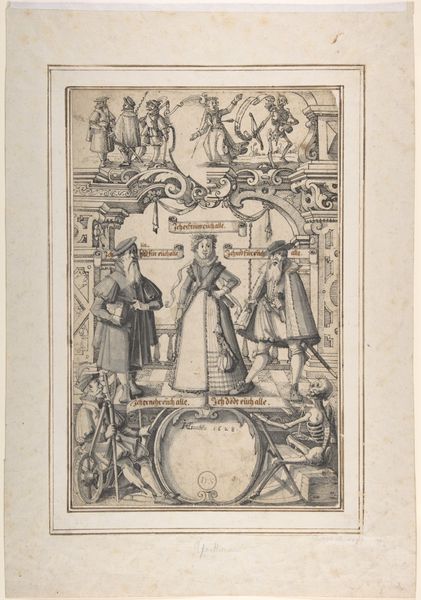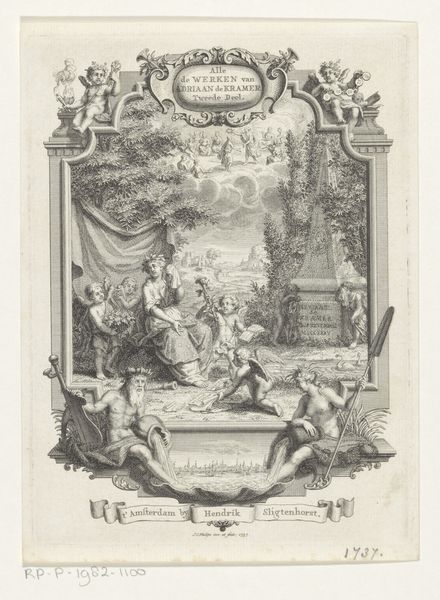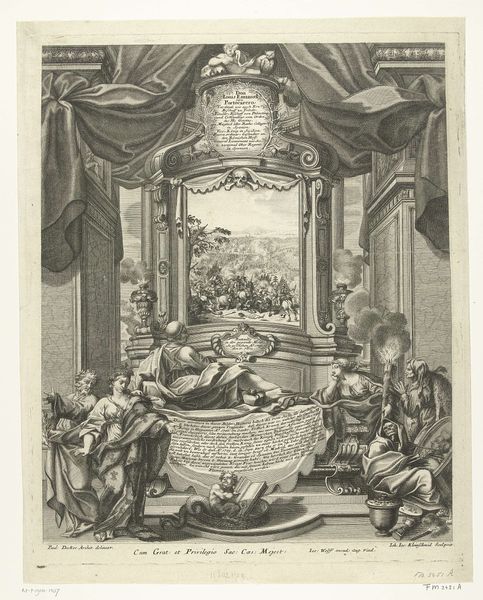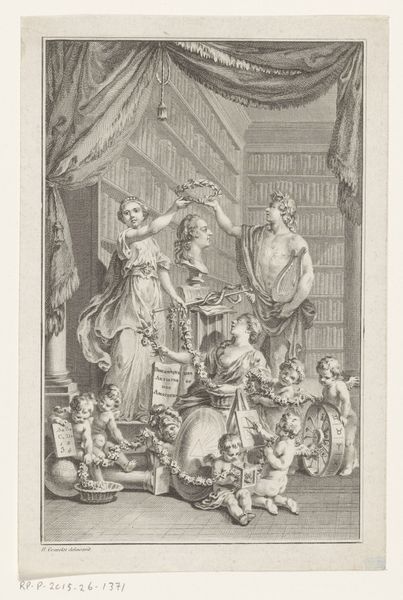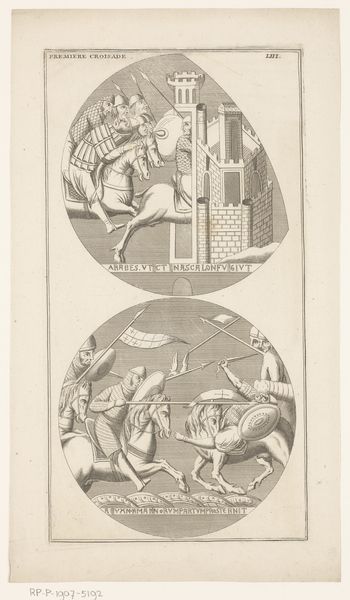
print, paper, engraving
#
portrait
#
baroque
# print
#
old engraving style
#
figuration
#
paper
#
genre-painting
#
history-painting
#
engraving
Dimensions: height 337 mm, width 197 mm
Copyright: Rijks Museum: Open Domain
Editor: Here we have "Edellieden brengen hulde aan graaf Henri de Foix," or "Noblemen Pay Homage to Count Henri de Foix," an engraving from the Rijksmuseum collection, dating from around 1729 to 1733. There is a formality to the scene, almost theatrical, yet something feels...staged. What is your reading of this piece? Curator: I agree that this piece feels performative. Considering its Baroque style and the period it represents, it's vital to examine the role prints played in disseminating power and historical narratives. The staged quality reinforces that; engravings like this were tools for shaping public memory and legitimizing authority. Notice how Henri is framed, elevated, centered – how does that visual language strike you? Editor: The positioning definitely reinforces the idea of power and status, almost as if the people are pieces that frame the stage. Curator: Precisely! The architectural details and the formal composition – the bowing figures, even the dog positioned at Henri's feet – everything contributes to a carefully constructed image of submission and order. Knowing that these images were circulated broadly, especially among the upper classes, how does that shift your perspective on the function of art at this time? Editor: I see how it functions almost like propaganda, creating and solidifying the image of a powerful and respected leader for public consumption. Curator: Exactly. This work tells us as much about the anxieties and aspirations of the ruling class as it does about the actual historical event. These images help visualize a desired social hierarchy for a specific audience. Considering this artwork today, how should a museum like the Rijksmuseum address this socio-historical angle? Editor: I guess it’s essential to consider not just the artistry but also the context and the active role art played in power dynamics. I'll look at art of the era differently now. Curator: Indeed, seeing art as both aesthetic object and historical tool reveals a great deal about the society that produced it.
Comments
No comments
Be the first to comment and join the conversation on the ultimate creative platform.
